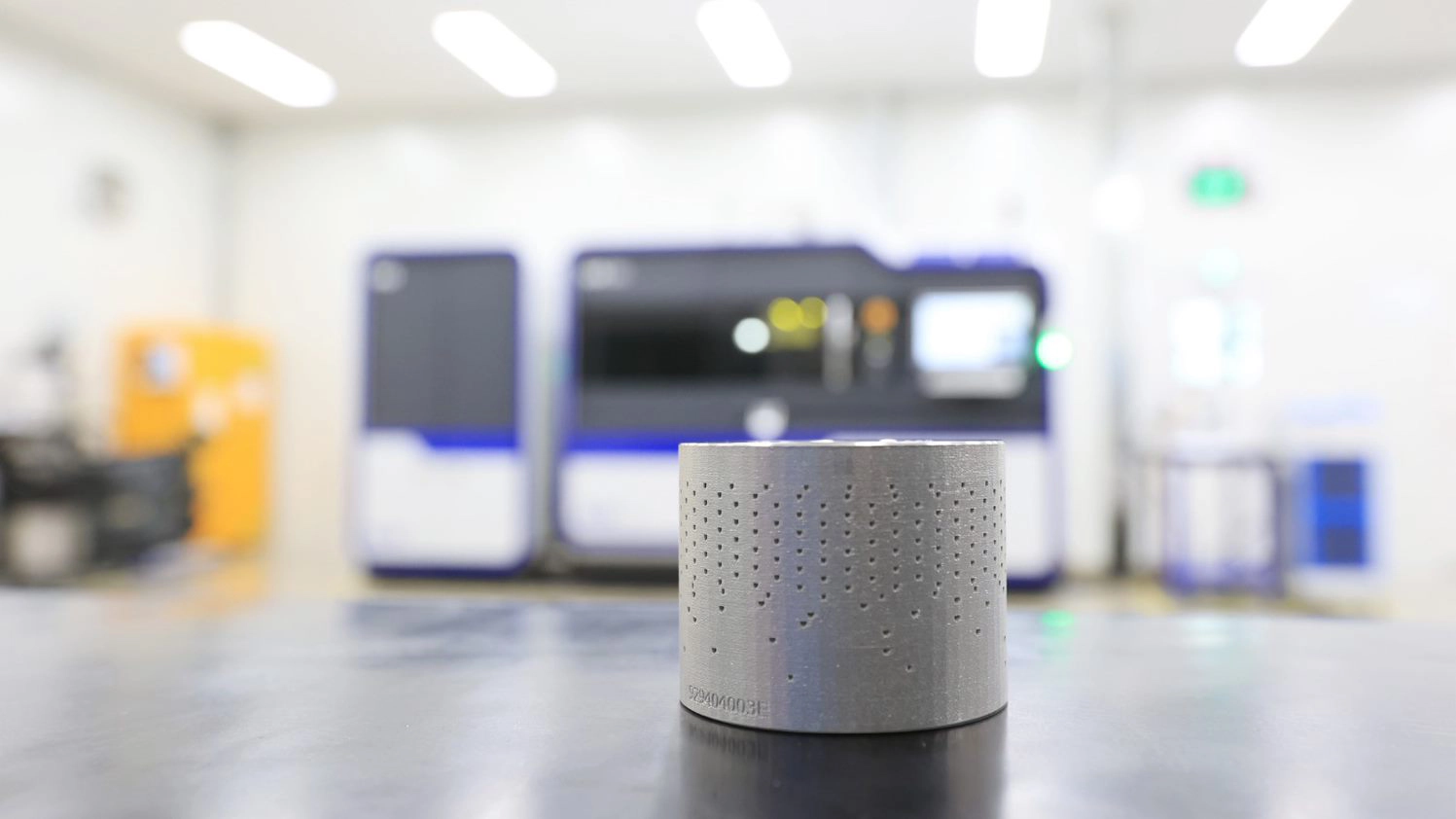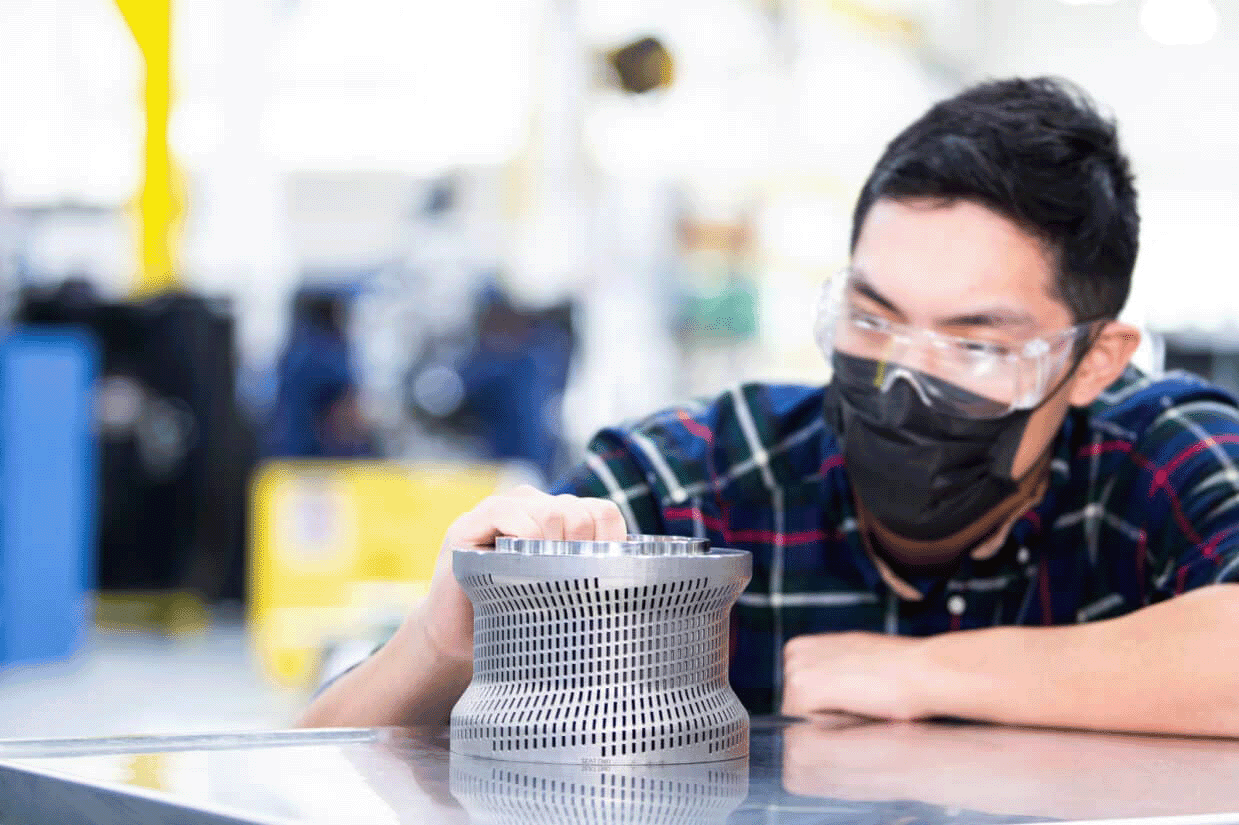


Engineers at IMI have been exploring the role of 3D-printed valve parts since 2008, but it’s really over the last five years that the technology has gathered pace. It’s an important part of ensuring our customers’ planned outages and routine servicing run to schedule, as well as the driving force behind Retrofit3D, IMI’s valve trim upgrade service.
AM is now found in IMI facilities across the world, such as Paju City in South Korea, where the team has recently installed the SLM280, a high-precision 3D printer that’s capable of producing medium- to high-volume metal AM parts.
We caught up with engineers Axel Urbain and MjungJae Lee to find out more about the project, how it’s transforming IMI’s approach to valve design and manufacturing in the region, and what the future holds for this exciting technology.
The Korea team had already collaborated on an earlier project with Fusion Technology, a local 3D printing vendor that represents SLM Solutions. We knew the vendor had sufficient experience with AM production and was able to provide full support as we integrated the printer into our facility. As for the printer itself, it’s ideal for metal part production and prototyping, with multiple lasers and closed-loop powder handling.
We decided to purchase the new printer in June 2022 and planning started immediately. It took six months from sign off to commissioning, training and qualification. We devoted almost two months to the latter stages as we wanted colleagues to familiarise themselves with the machine before using it for customer orders. Production of parts for live projects commenced in February 2023.
Commissioning was conducted according to SLM’s system testing and qualification. Following this, we continued with our own internal qualification according to the AM procedure set out by the Retrofit3D team in the USA, who have extensive experience with 3D-printed parts. The validation process included mechanical and flow capacity testing using a 3D-printed DRAG® disk stack.
Although process parameters were fine-tuned to reach the highest quality for IMI products, we were able to identify issues and resolve them by adjusting the parameters. These test-and-learn processes became the base of the current AM production standard.

This printer is incredibly versatile because it has a significantly larger build plate when compared to competing designs. It also has multiple lasers. These features allow us to manufacture parts much quicker than before without sacrificing part quality or integrity.
In theory, the printer can produce virtually any object within certain dimensions, though we currently use it to produce disk stacks and seat baskets featuring our patented DRAG® technology. However, this technology can be used to make a range of multi-stage flow control devices, including valve cages or disk stacks, flow distributors or diffusers, and multi-stage high-turndown control ball valves.
Conventional subtractive manufacturing creates a lot of material waste. Disk stacks, for instance, will be machined from raw sheet metal, with the offcut material often unsalvageable. AM, on the other hand, only uses what’s needed to complete the object that’s being printed, making it a far more efficient and sustainable method of manufacturing.
Our customers benefit from the shorter lead times, lower costs and a more agile response from their valve supplier. As parts can effectively be printed on demand, plant owners can also avoid the inconvenience and expense of having to stock extra inventory on site.
This technology is developing rapidly, but there are still challenges to negotiate before entire AM valves are introduced – not least those destined for use in severe service applications. More field testing is key, as is customer consultation with expert suppliers. It’s an exciting area of research and one which IMI is leading with major investments such as the SLM280.
To find out more about IMI’s work with AM, visit the Retrofit3D page.



